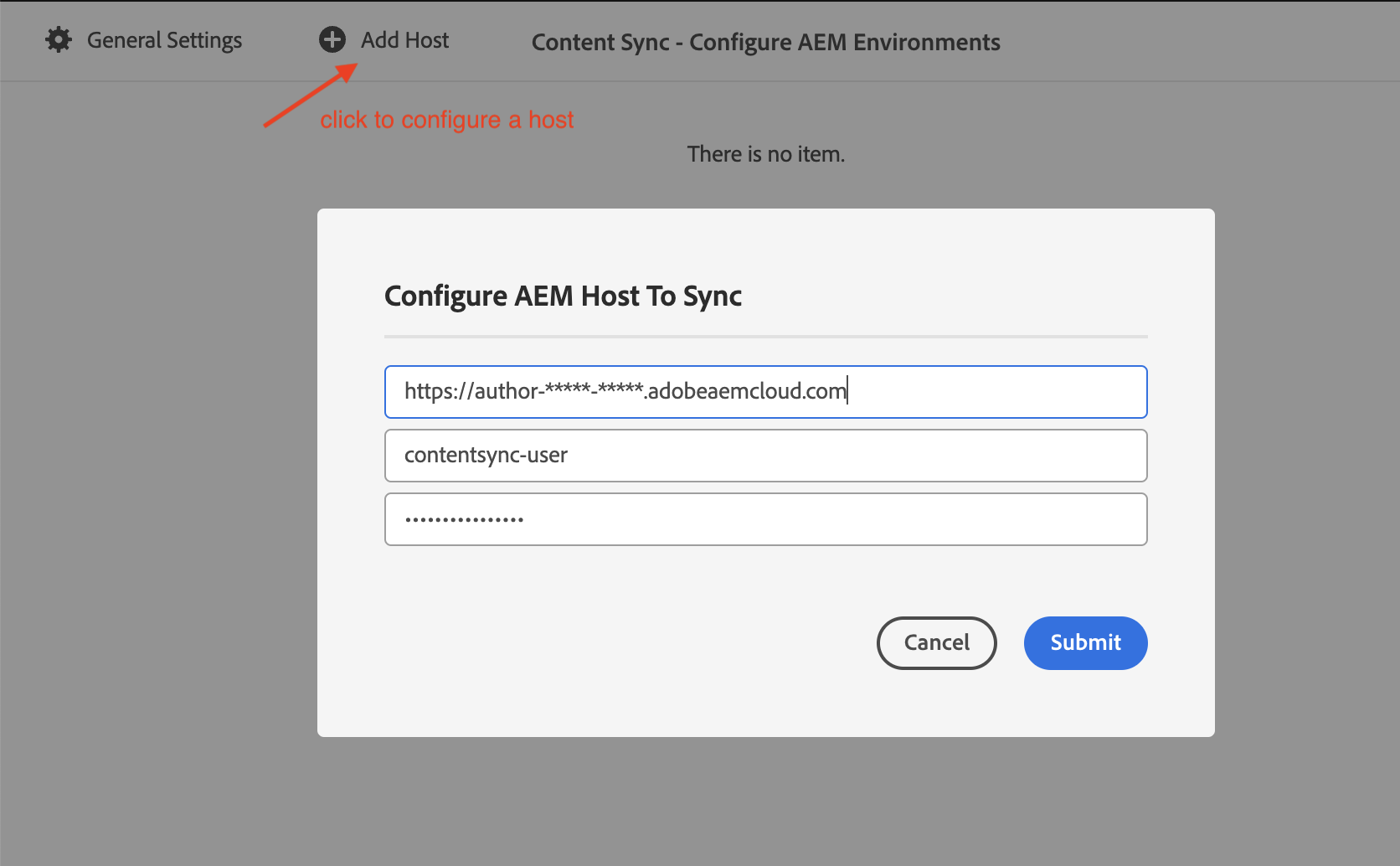Content Sync
Available since version 6.2.0
Purpose
Incrementally synchronize content between AEM Author instances.
ACS Content Sync is yet another solution aiming to overcome the shortcomings of using CRX Package Manager / VLT RCP to copy content between AEM environments.
Why do I need Content Sync?
Using CRX Package Manager to copy content between AEM environments has a number of limitations:
- CRX Package Manager requires escalated access, which is not always possible, especially in production environments
- Installing a package resets the version history.
- There are challenges to set up incremental updates.
How does Content Sync Work?
Content Sync uses JSON Export/Import between Sling GET/POST servlets. The tool fetches a catalog of resources from the source instance, e.g.
/content/path1 lastModified1
/content/path2 lastModified2
/content/path3 lastModified3
then it compares it with the local state, computes the delta and synchronizes it via JSON Export/Import.
What can I sync?
In general - any content resources, like
- Pages
- Assets
- Experience Fragments
- Content Fragments
- Tags
- /conf/* data
How many HTTP calls does Content Sync make?
The ballpark estimation is O(N) where N is the number of content resources (cq:Page, dam:Asset, etc.) being sync-ed.
For example, it takes an HTTP call to sync a cq:Page resource, so to sync a tree of N cq:Page nodes the tool will make minimum N HTTP calls.
To sync a dam:Asset resource the tool will make an HTTP call to grab the jcr:content and sub-nodes, and an HTTP call to grab binary data for each rendition.
Features
- AEM CS compatible, e.g. you can sync https://author-xxxxx.adobeaemcloud.com from https://author-yyyyy.adobeaemcloud.com
- Binary data is preserved
- Version history is preserved
- Node ordering is preserved
- Incremental updates based on jcr:lastModified/cq:lastModified
How to Use
In order to use the Content Sync tool, you need the latest version of ACS Commons installed on the source and target AEM instances.
Configure Sling Get Servlet on the source AEM instance
ContentSync requires a few tweaks in the Sling Get Servlet configuration to ensure it renders the correct JSON .
Create an OSGi configuration for PID org.apache.sling.servlets.get.DefaultGetServlet and make sure that:
- JSON Renderer is enabled
- JSON Max Results parameter is set to at least 1000
-
Legacy ECMA date format is unchecked

AEM Publish configurations
In order to sync content from an AEM Publish environment, the following configuration much be made to the Apache Sling Authentication Service OSGi configuruation, adding the path +/apps/acs-commons/content/contentsync to paths with authenticationr requirements.
/apps/example-app/osgiconfig/config.publish/org.apache.sling.engine.impl.auth.SlingAuthenticator.cfg.json
{
"auth.annonymous":true,
"auth.sudo.cookie":"sling.sudo",
"sling.auth.requirements":[
"+/libs/granite/oauth/content/authorization",
"+/apps/acs-commons/content/contentsync"
],
"auth.http.realm":"Sling (Development)",
"auth.http":"preemptive",
"auth.sudo.parameter":"sudo"
}
Configure the host(s) to synchronize from
Navigate to the Content Sync tool http://localhost:4502/apps/acs-commons/content/contentsync.html and click the Configure button in top right corner:

Add a host to synchronize from:

The contentsync-user user needs read permissions on the content you are going to sync.
Run the Content Sync tool
Navigate to the Content Sync tool http://localhost:4502/apps/acs-commons/content/contentsync.html and select a path to synchronize. The default mode is Incremental, which means only new or modified resources will be downloaded. If the Incremental option is unchecked then the tool will do full sync and download the entire content tree.
The ‘On-complete’ workflow option allows you to define a custom post-update action. For example, you can define a workflow to clear properties like cq:replicationStatus, or automatically publish a resource if it is published in the source environment.

Pluggable Update Strategy
The strategy to select incremental delta is pluggable. The default algorithm is based on the cq:lastModified/jcr:lastModified timestamp. As an example, Content Sync ships with AssetChecksumStrategy strategy which synchronizes dam:Asset nodes based on the dam:sha1 checksum in the asset metadata.
Users can plug in their custom strategies by implementing com.adobe.acs.commons.contentsync.UpdateStrategy interface;